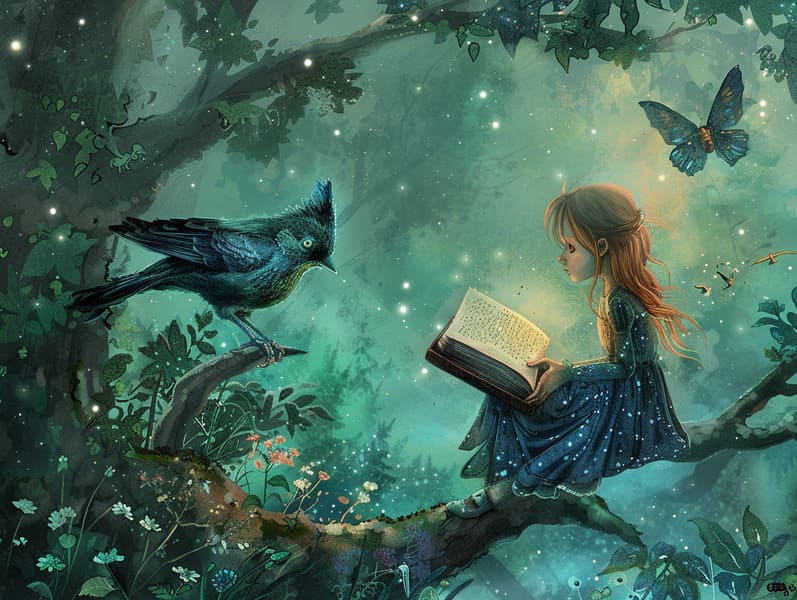The Beginning of Short Fairy Tales and Their Immortal Loveliness.
The Beginning of Short Fairy Tales and Their Immortal Loveliness.
Blog Article

Fairy tales for kids have historical significance. These tales have been narrated from one generation to the next ages before they were ever documented. They emerged from a variety of traditions, including African traditions. They were initially passed along among adults, often carrying themes and messages reflective of the societal norms and beliefs of the time.
The Brothers Grimm, Jacob and Wilhelm, were among the first to gather many of these beloved tales. Their anthology, "Grimm's Fairy Tales," included classics like "Cinder Maid," "Hansel and Gretel," and "Schneewittchen," which have since become classics in the world of traditional fairy tales. Similarly, Andersen's enchanting narratives, such as "The Sea Maid," and "The Little Duckling," have stolen hearts worldwide, cementing their place in the pantheon of famous fairy tales.
Though they are centuries old, these stories remain as impactful as ever, especially as children's night stories. These fantastical tales are now available in different formats, including artistically illustrated books, delightful animations, and digital fairy tales.
Their lasting presence can be linked to several captivating elements:
Vital Lessons: Old fairy tales often share important moral lessons. Stories like "The Boy Who Cried Wolf" teach the virtue of truth, while "The Tortoise and the Hare" show the benefits of perseverance and modesty. These narratives offer young readers clear distinctions between good and bad, shaping their moral compass in a tender yet lasting way.
Sympathy and Perception: Timeless fairy tales frequently portray heroes facing tests and troubles, stimulating listeners to empathize with their struggles and back their triumphs. For instance, "The Story of Beauty and the Beast" demonstrates the merit of seeing beyond looks to realize the inner being of a being, enhancing understanding and appreciation.
Cultural Insights: Many traditional fairy tales are deeply ingrained in the cultural contexts from which they grew. Engaging with these narratives can provide captivating looks into different backgrounds, building a sense of cultural awareness and acknowledgment.
Fantasy and Innovation: The fantasy-filled elements in ancient fairy tales—spells and potions—engender children’s imaginations. These fairy tales move readers to extraordinary realms, stimulating imaginative ideas and a sense of curiosity that lasts a lifetime.
Classic fairy tales are not only whimsical but also enlightening. They work as whimsical tools in enhancing various cognitive and emotional skills in more info kids. When old fairy tales are recited, they develop language proficiency by showing new phrases and complex sentence structures. This practice also develops auditory skills and focus, as little ones remain attentive, expectant to see what happens next.
Furthermore, discussing the themes and characters of ancient fairy tales can foster cognitive skills and cognitive skills. Children are guided to find patterns, foresee events, and realize cause and effect. These reflections also boost the young say their thoughts and feelings, nurturing their emotional intelligence.
In today’s online age, the prevalence of web-based fairy tales has made these fairy tales more attainable than ever. Websites and apps make available broad selections of Grimm's fairy tales that can be experienced or listened to anytime, anywhere. Fairy tales narrated are particularly popular, featuring an captivating way for kids to appreciate these fantastical tales. Voice books and narrated videos lead characters and settings to life, often supplemented by magical sound effects and music that intensify the story adventure.
The everlasting appeal of ancient fairy tales lies in their ability to adapt to modern society while keeping hold of their key morals. Contemporary versions of these tales often highlight more diverse protagonists and modern settings, making them understandable to today’s audience. However, the basic principles of fortitude, understanding, and even-handedness remain unchanged, continuing to touch children of all ages.
Old fairy tales also offer a sense of assurance and comprehensibility. They showcase a well-ordered narrative with a straightforward beginning, middle, and end, often winding up with the culmination of conflicts and the triumph of good over bad. This certainty can be comforting for children, yielding a sense of invariability in an fluctuating world.
Traditional fairy tales continue to enthrall and instruct new generations, maintaining their magic and impact in modern society. As kids' bedtime tales, they feature a perfect blend of allure and teaching, boosting moral values, empathy, and creativity. The proliferation of free fairy tales online and the sought after status of fairy tales read aloud warrant that these timeless fairy tales remain obtainable to new generations.
By upholding and releasing these tales, we continue to cherish the rich tapestry of myths and cultural heritage. Whether you are experiencing a vibrantly illustrated book, discovering a online collection, or hearing an sound book, the elegance of classic fairy tales is always within reach. These fairy tales highlight of the lasting nature of fairy tales and its ability to join us across centuries and lands.
If you are browsing a beautifully illustrated book, discovering a cyber library, or listening to an read-aloud story, the mystique of timeless fairy tales is always within reach.
These fairy tales highlight of the invariable spell of stories and its ability to unite us across generations and cultures, forging a link that delights and instructs alike.